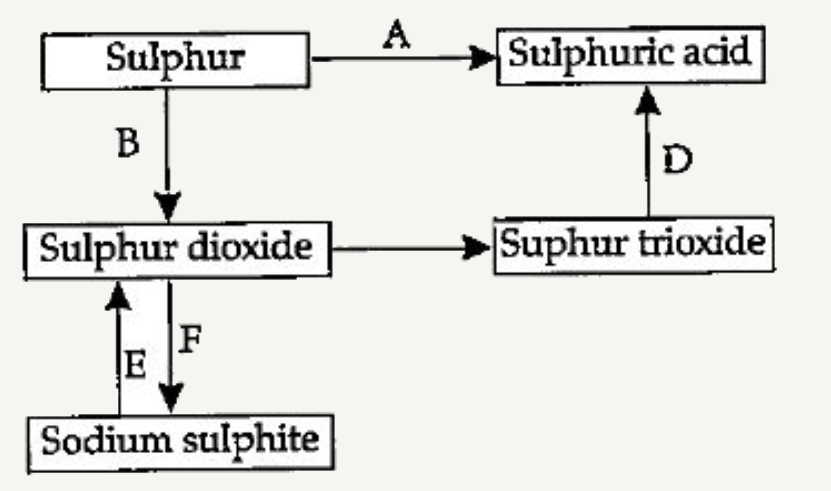The reaction involved in reduction of NAD+ is
Glucose→Glucose6−P
Fructose 1,6 diphosphate −−−PGAL+DiHAP
Glucose6−P→Fruc→se6−P
PGAL→PGA.
The correct Answer is:D
To determine the reaction involved in the reduction of NAD⁺, we need to analyze the provided options based on the glycolysis pathway. Here’s a step-by-step breakdown of the reasoning:
Step 1: Understand the Role of NAD⁺ in Glycolysis
NAD⁺ (Nicotinamide adenine dinucleotide) acts as an electron carrier in cellular respiration. During glycolysis, it is reduced to NADH when it accepts electrons.
Step 2: Examine Each Option
1. Glucose to Glucose 6-Phosphate:
- This reaction involves the phosphorylation of glucose and uses ATP. NAD⁺ is not involved in this step, so this option is incorrect.
2. Fructose 1,6-bisphosphate to Glyceraldehyde 3-Phosphate and Dihydroxyacetone Phosphate:
- This step involves the cleavage of fructose 1,6-bisphosphate into two triose sugars. There is no reduction of NAD⁺ in this reaction, making this option incorrect.
3. Glucose 6-Phosphate to Fructose 6-Phosphate:
- This is an isomerization reaction and does not involve the reduction of NAD⁺. Therefore, this option is also incorrect.
4. Phosphoglyceraldehyde to 1,3-Bisphosphoglyceric Acid:
- In this reaction, glyceraldehyde 3-phosphate (also known as phosphoglyceraldehyde) is oxidized to 1,3-bisphosphoglyceric acid. During this process, NAD⁺ is reduced to NADH, indicating that this is the correct option.
Step 3: Conclusion
The correct reaction involved in the reduction of NAD⁺ is:
Phosphoglyceraldehyde to 1,3-Bisphosphoglyceric Acid (Option 4).
NAD⁺ (Nicotinamide adenine dinucleotide) acts as an electron carrier in cellular respiration. During glycolysis, it is reduced to NADH when it accepts electrons.
1. Glucose to Glucose 6-Phosphate:
- This reaction involves the phosphorylation of glucose and uses ATP. NAD⁺ is not involved in this step, so this option is incorrect.
- This step involves the cleavage of fructose 1,6-bisphosphate into two triose sugars. There is no reduction of NAD⁺ in this reaction, making this option incorrect.
- This is an isomerization reaction and does not involve the reduction of NAD⁺. Therefore, this option is also incorrect.
- In this reaction, glyceraldehyde 3-phosphate (also known as phosphoglyceraldehyde) is oxidized to 1,3-bisphosphoglyceric acid. During this process, NAD⁺ is reduced to NADH, indicating that this is the correct option.
The correct reaction involved in the reduction of NAD⁺ is:
Phosphoglyceraldehyde to 1,3-Bisphosphoglyceric Acid (Option 4).
Topper's Solved these Questions
- RESPIRATIONBOOK - DINESH PUBLICATION ENGLISHCHAPTER - RESPIRATIONEXERCISE - CHECK YOUR GRASP
20 Videos
- RESPIRATIONBOOK - DINESH PUBLICATION ENGLISHCHAPTER - RESPIRATIONEXERCISE - CHECK YOUR GRASP
20 Videos
- REPTILIA-CREEPING VERTEBRATESBOOK - DINESH PUBLICATION ENGLISHCHAPTER - REPTILIA-CREEPING VERTEBRATESEXERCISE - CHECK YOUR GRASP
10 Videos
- ROOTBOOK - DINESH PUBLICATION ENGLISHCHAPTER - ROOTEXERCISE - CHECK YOUR GRASP
10 Videos
Similar Questions
Knowledge Check
Ester formation involves the reaction of
Aan aldehyde and a ketoneBan alcohol with RMgXCtwo molecules of an acid with dehydrating agentDan acyl halide with an alcohol.Ester formation involves the reaction of
Aan aldehyde and a ketoneBan alcohol with RMgXCtwo molecules of an acid with dehydrating agentDan acyl halide with an alcohol.Ester formation involves the reaction of
Aan aldehyde and a ketoneBan alcohol with RMgXCtwo molecules of an acid with dehydrating agentDan acyl halide with an alcohol.

What is the reaction involved in B?
View SolutionReaction involving syn addition is
View SolutionNumber of electron involved in the reduction of Cr2O2−7 ion in acidic solution of Cr3+ is
View SolutionMetabolic reaction involves
View SolutionName two enzymes involved in nitrogen reduction in plants. What are the important factors involved in the reduction of nitrate by one of these enzymers?
View Solution
